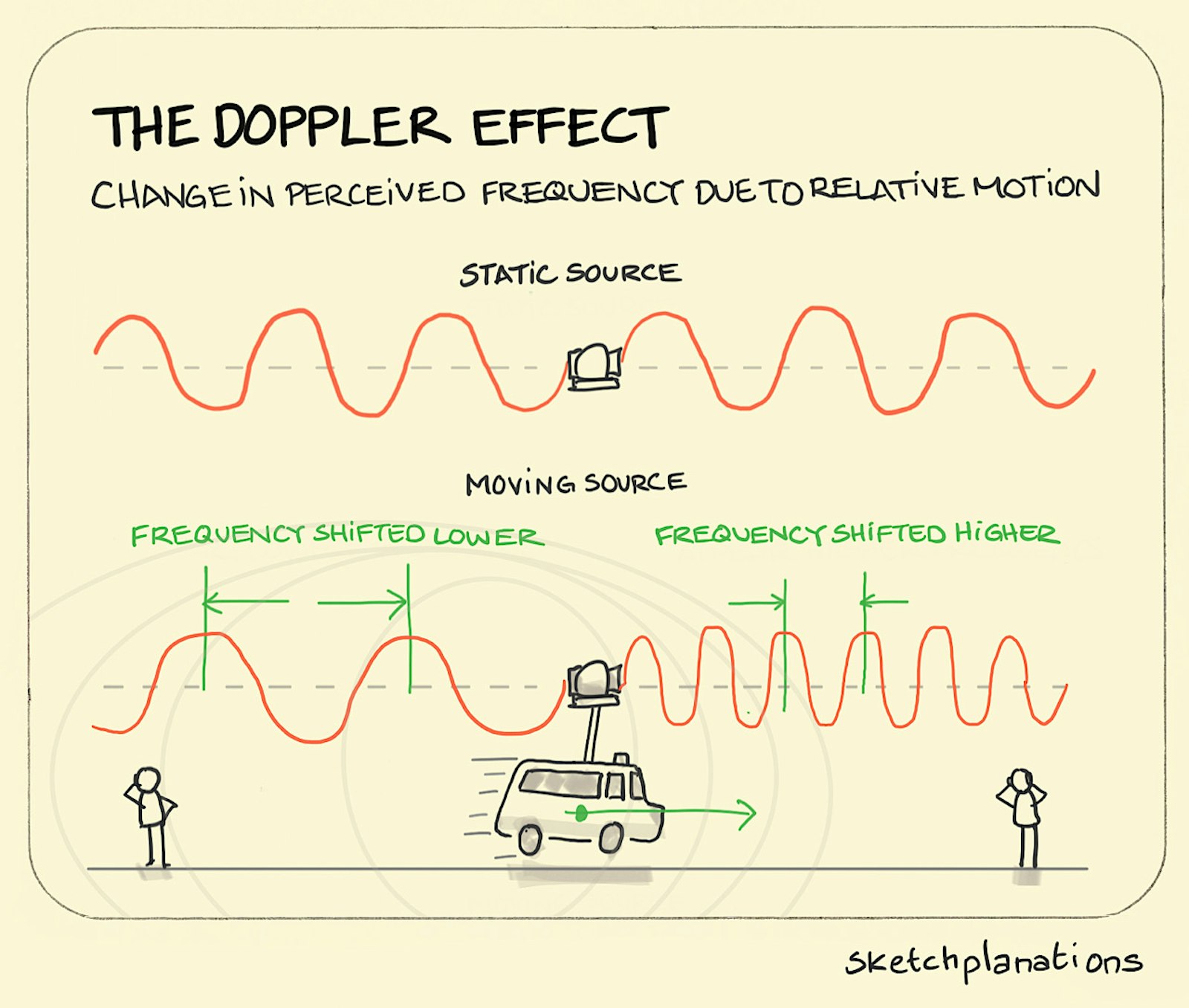
Redshift
Redshift refers to light being 'shifted' towards the redder end of the spectrum — longer wavelengths — as objects move away from each other. If a light source is moving towards us then light is blueshifted, shifting towards the bluer end of the spectrum, shorter wavelengths.
Imagine waving a spring back and forth to create a wave and then starting to run away – the waves would be stretched longer. Because the universe is expanding 🤯 distant galaxies are moving away from us faster than nearer ones — imagine how the chocolate chips in a cookie move away from each other as the cookie bakes and grows in an oven. By comparing the redshift of light seen from distant galaxies with what we would expect to see it's possible to use redshift to determine how far they are away.
Redshift is an example of the Doppler effect, or Doppler shift, in action. It's more commonly known by the stretching or compressing of soundwaves as, say, an ambulance moves towards or away from you, or how the sound in front of a moving aircraft eventually can produce a sonic boom.





